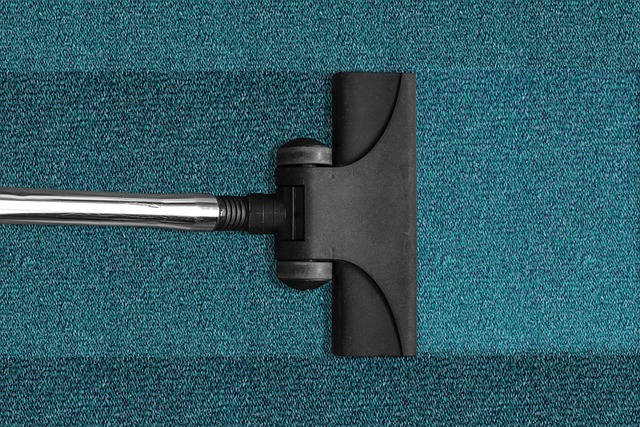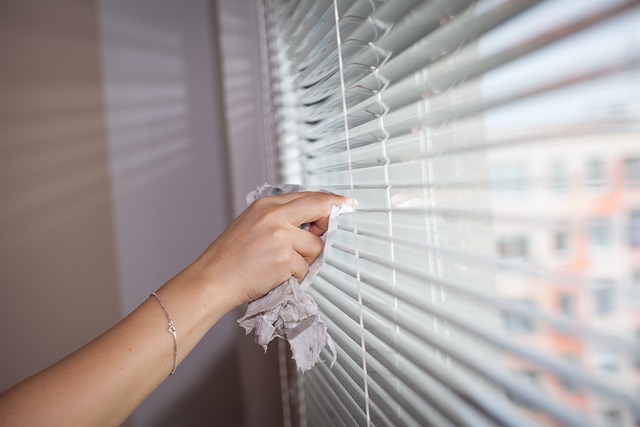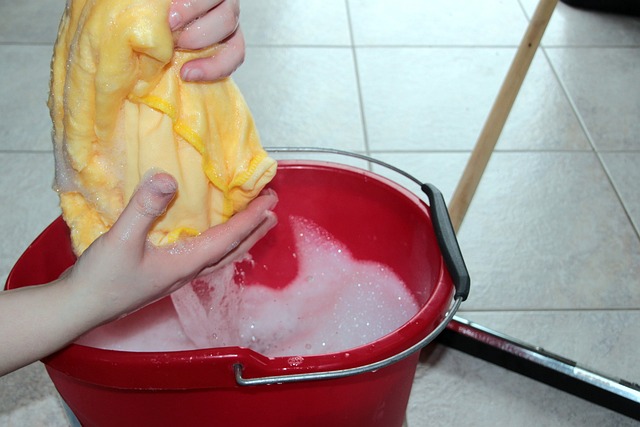Grout is a vital component that protects tiles and enhances aesthetics but, over time, it accumulates dirt and discolors. Regular cleaning is essential for maintaining hygiene, preventing moisture damage, and preserving tile beauty. Common issues include discoloration from stains, mold growth, and cracks caused by environmental factors or foot traffic. Effective grout cleaning involves using the right tools and products, such as stiff brushes, detergent, commercial cleaners, baking soda, or vinegar, to remove dirt and stains. Regular maintenance, sealing after professional cleaning, and quick treatment of damage ensure grout stays in optimal condition, protecting homes and saving costs.
Tired of seeing discolored, stained grout in your once-pristine tiles? Understanding proper grout cleaning is essential for maintaining the beauty and longevity of your home’s flooring. This guide breaks down everything you need to know about grout cleaning, from identifying common issues like moisture-induced discoloration to discovering effective grout cleaning methods and choosing the best products. Learn how to keep your grout looking fresh and new, preserving the overall look of your tiles for years to come.
Understanding Grout and Its Purpose

Grout, often an afterthought in home maintenance, plays a vital role in more than just filling spaces between tiles. This material not only enhances the aesthetic appeal of tiled surfaces but also serves as a protective barrier, preventing water and moisture from seeping into the underlying substrate. Over time, however, grout can become discolored, damaged, or filled with dirt and grime, leading to unsightly appearances and potential damage to the tile itself. Regular grout cleaning is essential to maintain the integrity of these spaces, ensuring they remain both functional and aesthetically pleasing. By understanding the purpose and composition of grout, homeowners and professionals alike can better appreciate the need for proper care and maintenance, including timely grout cleaning.
Why Cleaning Grout is Essential for Your Home

Keeping your home’s grout clean is an often-overlooked aspect of maintenance that can significantly impact the overall cleanliness and aesthetics of your space. Grout, the material that fills the gaps between tiles in floors and walls, is a haven for dirt, dust, and bacteria due to its porous nature. Over time, this build-up not only makes surfaces look unkempt but also poses health risks by harbouring allergens and pathogens. Regular grout cleaning is essential for several reasons.
First and foremost, it ensures your home remains hygienically clean. Removing the grime and stains from grout not only enhances the visual appeal of tiled areas but also contributes to a healthier living environment. Moreover, clean grout prevents the accumulation of moisture, which can lead to mould growth and structural damage over time. By investing in regular grout cleaning, homeowners can protect their investment in flooring and maintain the value and beauty of their homes.
Common Issues with Grout Over Time

Over time, grout in residential settings can encounter several issues that require professional attention. One of the most prevalent problems is discolouration, where dirt, mould, and mildew build up, turning the once-bright grout lines into unsightly patches. This not only affects the aesthetic appeal of the space but also indicates a deeper cleaning issue. Another common concern is the growth of algae, which thrives in damp environments, creating slippery surfaces and unappealing stains.
Moreover, grout can become cracked or fragmented due to various factors like settling, thermal expansion, or heavy foot traffic. These structural damages not only compromise the integrity of the tile and grout setup but also open doors for dirt and moisture intrusion. Regular cleaning may not be effective in restoring grout to its original condition when these issues have set in, making professional grout cleaning a necessity to revive the space’s cleanliness and beauty.
The Impact of Moisture on Grout Discoloration

Moisture is one of the primary culprits behind grout discoloration, a common issue that many homeowners face. Over time, moisture seeps into the tiny gaps between tiles and evaporates, leaving behind mineral deposits and organic compounds. These substances gradually stain and discolor the grout, turning it from its original light color to shades of yellow, brown, or even green. This is especially prevalent in areas with high humidity or where there’s frequent condensation on surfaces.
Regular grout cleaning can help mitigate this issue. By eliminating excess moisture and removing built-up grime, you can restore the grout’s freshness and prevent further discoloration. Grout cleaning involves using specialized tools and solutions to scrub away dirt, mold, and mildew, leaving your tile and grout looking as good as new. This not only enhances the aesthetic appeal of your space but also prevents the growth of bacteria and fungi that thrive in moist environments.
Effective Grout Cleaning Methods

When it comes to effective grout cleaning, there are several methods that can restore the freshness and cleanliness of your residential spaces. Start by using a stiff-bristled brush or an old toothbrush dipped in a mixture of warm water and mild detergent. Scrub away any visible dirt or stains, being careful not to damage the grout itself. This manual approach is ideal for smaller areas or hard-to-reach spots.
For more extensive grout cleaning, consider using a commercial grout cleaner or a natural solution like baking soda and vinegar. These products are effective in tackling stubborn stains and deodorizing the grout. Apply the chosen cleaner to the grout lines, let it sit for the recommended time, then rinse thoroughly with warm water. Regular cleaning and maintenance will prevent the buildup of dirt and ensure your grout remains in optimal condition.
Choosing the Right Cleaning Products

When it comes to grout cleaning, selecting the right products is half the battle won. The market offers a plethora of options tailored for different types of grout and stains. For instance, acid-based cleaners are effective for removing tough, mineral deposits but must be used cautiously to avoid damaging the grout or surface. On the other hand, enzyme-based formulas are eco-friendly alternatives suitable for tile and grout with organic debris.
Consider your grout’s material—whether ceramic, porcelain, or stone—and the extent of staining before choosing a cleaner. For heavy-duty cleaning, a combination of a powerful grout cleaner and a scrub brush can be more effective than a single product. Always follow manufacturer instructions to ensure optimal results while keeping safety in mind, especially when using harsh chemicals.
Tips for Maintaining Clean Grout

Keeping your grout clean is an essential part of maintaining a fresh and inviting home. Regular cleaning can prevent dirt, stains, and mold from building up, ensuring your grout stays bright and pristine. Start by sweeping or vacuuming floors to remove loose debris, then apply a mild detergent or grout cleaner directly to the grout lines. A soft-bristled brush can help scrub away any grime, reaching deep into the crevices. Regular cleaning also involves wiping down floors with a damp cloth to prevent dust and dirt from settling.
For long-lasting results, consider sealing your grout after professional cleaning. Sealing protects against water damage and stains, making it easier to keep your grout clean in between professional cleanings. Additionally, regularly monitoring and addressing any signs of discoloration or damage early on can save you time and money down the line. Remember, a little regular care goes a long way in keeping your grout looking like new.
